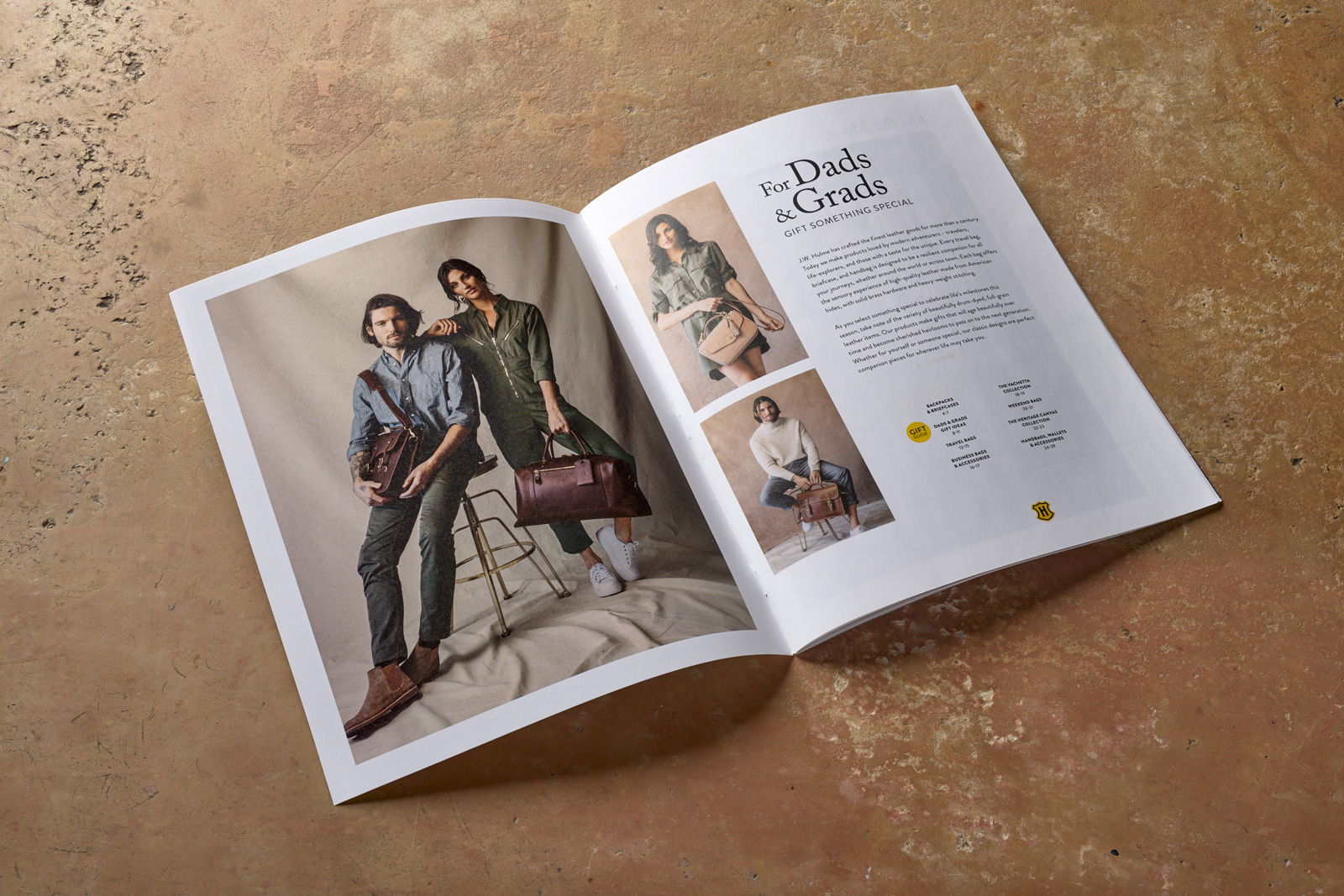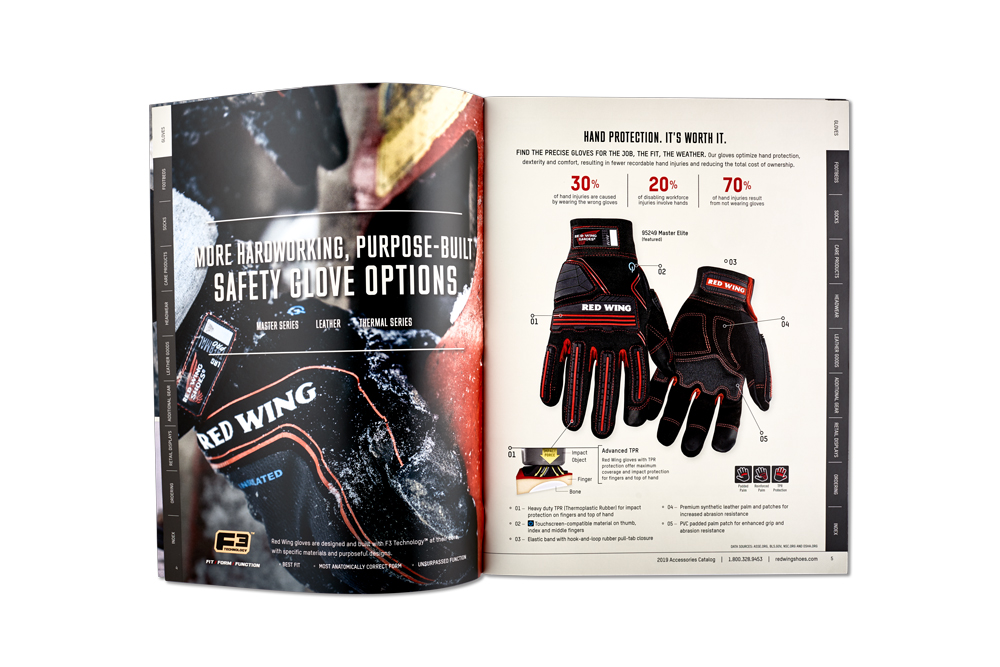
Catalogs — still a powerful tool
While there are conflicting theories as to when the first modern catalog was published, it’s pretty widely accepted that the first was the Montgomery Ward mail order catalog, published on August 18, 1872.
That means that modern catalogs have been used—at varying degrees of popularity—for nearly 150 years. (Note that Montgomery Ward is the earliest of modern catalogs. Otherwise, catalogs have been around since the 1400s in Italy and Western Europe selling books, seeds, and other hard-to-come-by goods.)
Some may argue that catalogs are losing steam. This may be true for mail-order catalogs considering the internet age has significantly simplified the way we order products, but print and digital catalogs have not declined in popularity. They simply serve a different purpose. Today, many subscribers still receive catalogs in the mail primarily for the physical, tactile feel of the paper in their hands. As Studio Eight creative director Keely McKernan puts it, it gives us a chance to set technology aside and let ourselves absorb something more meaningful. “While I’m taking a break, I like to get away from electronics, so I’ll look at the layout, color and trending designs. It’s really more of a look-book for me.”
 Whether you plan to purchase anything out of a catalog, the physical book is a novelty. Subscribers might not see how much time and effort went into creating a layout but there is something in that devotion that a designer puts into his or her work that is passed on to the reader. Catalogs really do evoke emotion in readers. As Keely points out, seeing beautiful, relatable photography in a catalog makes you wish you were part of the scene—whether you wish you were hiking after flipping through an REI catalog, or if you catch yourself daydreaming about that warm weather vacation you saw in the latest Anthropologie materials.
Whether you plan to purchase anything out of a catalog, the physical book is a novelty. Subscribers might not see how much time and effort went into creating a layout but there is something in that devotion that a designer puts into his or her work that is passed on to the reader. Catalogs really do evoke emotion in readers. As Keely points out, seeing beautiful, relatable photography in a catalog makes you wish you were part of the scene—whether you wish you were hiking after flipping through an REI catalog, or if you catch yourself daydreaming about that warm weather vacation you saw in the latest Anthropologie materials.
Catalogs continue to be powerful marketing tools because of the emotions mentioned above: they stir our daydreaming, they present us with nostalgic feelings, and, ultimately, they encourage consumers to purchase whatever product they’re selling. Sometimes, catalogs can also drive sales better than other digital marketing tactics, according to CNBC. Receiving a physical catalog in the mail, or picking one up in store solidifies a consumer’s loyalty to a certain brand. A catalog isn’t a piece of junk mail; it’s not spam that shows up daily in an inbox. It’s typically something that the consumer sought out because your brand is a favorite, and they plan to continue shopping with you in the future. Catalogs are also meant to tie a company’s style together, to create a cohesive feel from storefront displays and web banners, to email blasts and catalogs.
Studio Eight has been hit with an influx of catalog production projects within the past couple of years. We’ve even had a couple of interactive PDFs cycle through our creative department. Several of these projects are B2B or meant for distribution only, but even these catalogs harbor the passion behind the products. Because of this influx, our design team has really refined and streamlined the production process. That said, although the process has become easier, it doesn’t make the task of building out a full catalog any less challenging.
As senior art director Maria Hosley put it, there is a lot of strategy that goes into building a catalog from scratch. She talks about how important it is that certain products or messages be placed in their rightful spots within the book to make the greatest impact. It’s a chance for our design team to flex their creativity and put themselves in the buyers’ shoes. Art director Jenny Christensen truly enjoys taking a huge bulk of almost indecipherable information and putting it into a beautiful, custom curated layout, thereby helping to evoke that emotion in consumers. “There is a lot of elbow grease that goes into [building a catalog],” Jenny explained. “But from a typography and layout standpoint, it is really fun.”
There is a worthwhile feeling in receiving a boatload of content from a client, and turning it into a gorgeous, finished product that has the potential to greatly increase the clients’ return on investment. Not only is it a satisfying feeling for us, but our Studio Eight designers, photographer, and production artists are also quite talented when it comes to catalog production. Our photographs appear in catalogs throughout the decades, and consumers can spot photographs our team has retouched in magazines and catalogs throughout the US. So, if any of our readers have been on the fence as to whether a catalog is a smart move for their companies, give Studio Eight a call, and let us walk you through the details. We’d love to work with you in getting your message out there.